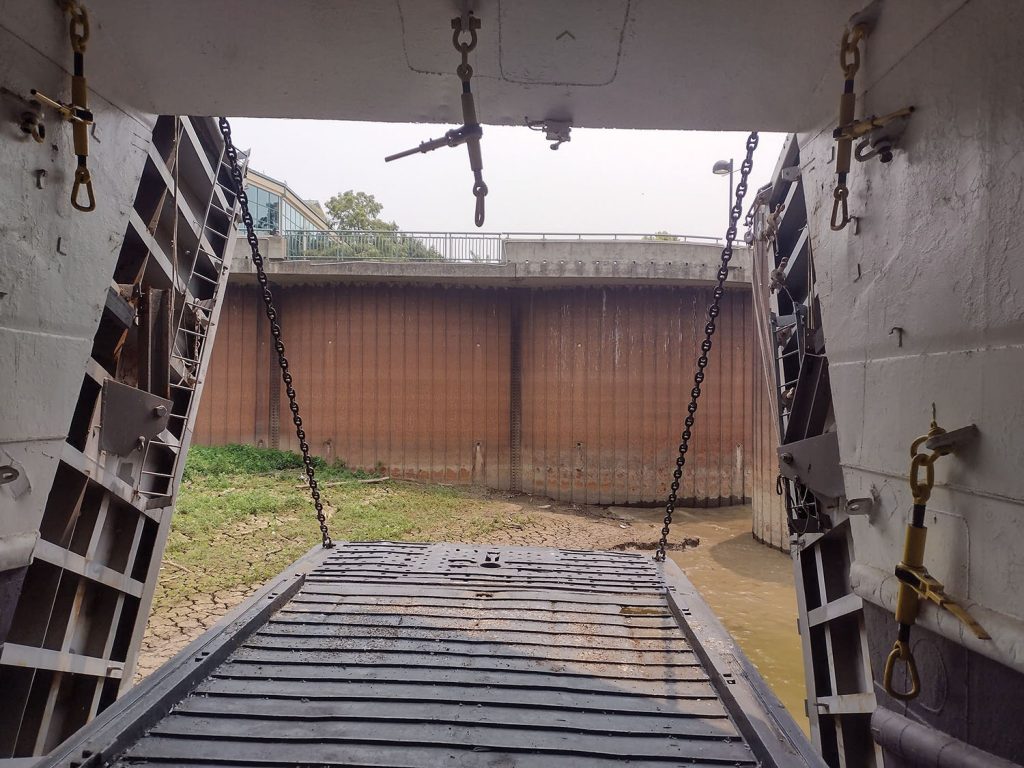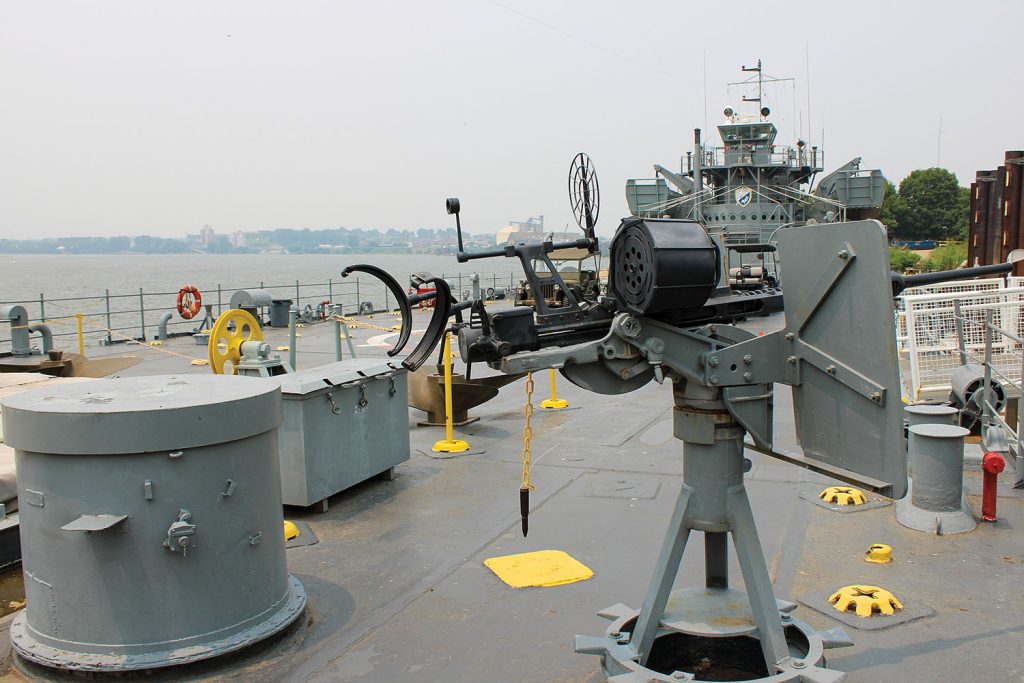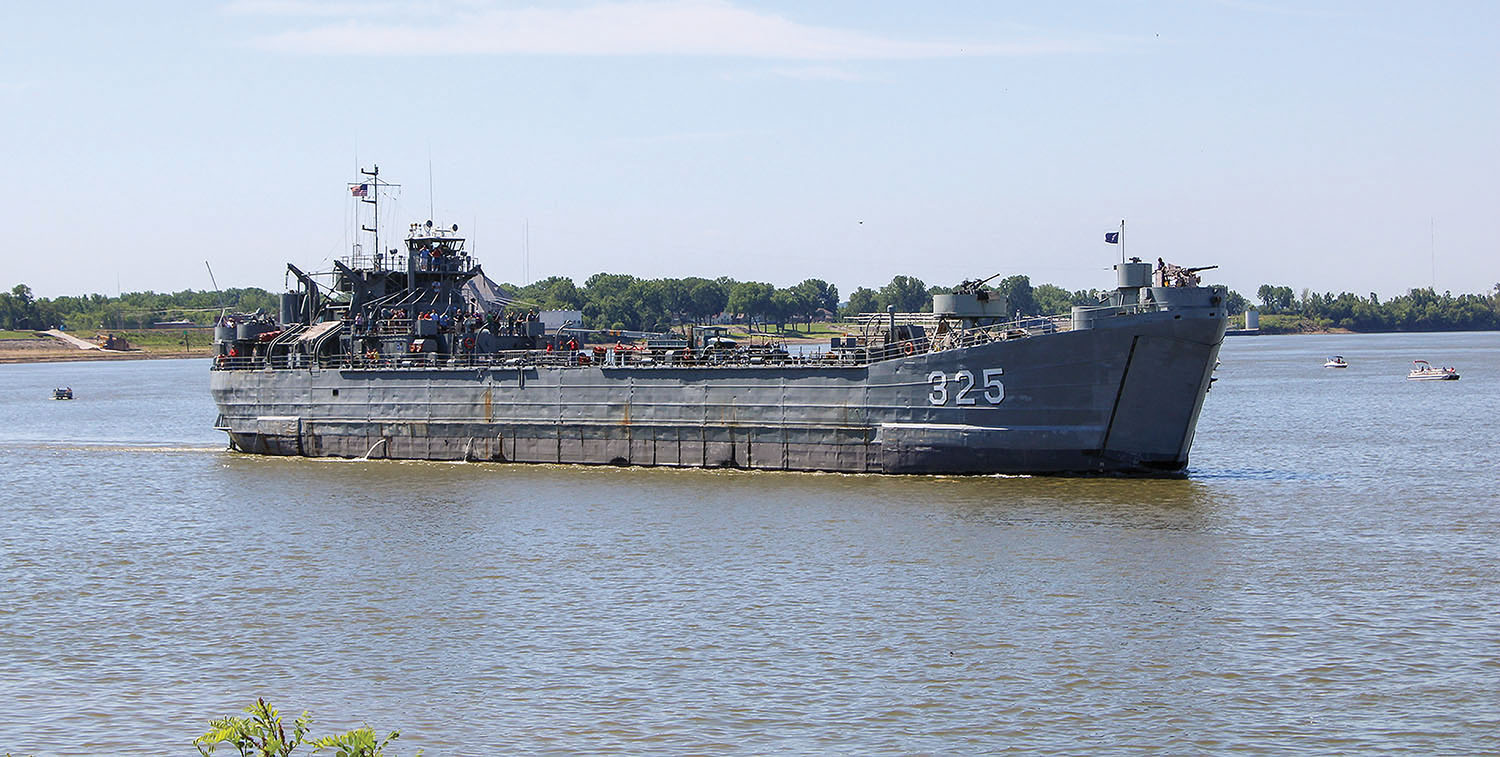Those interested in volunteering their time for a few weeks could have the unique opportunity to serve on a World War II amphibious ship.
LST-325, the only operational Landing Ship, Tank in World War II configuration to be afloat in U.S. waters, will make its annual cruise in August and September, visiting the river communities of LaCrosse, Wis., Dubuque, Iowa, and Hannibal, Mo.
Those touring the ship learn information about the war and the role of amphibious forces in the success of major invasions, including D-Day. While normally homeported in Evansville, Ind., where many of the vessels were built, the LST makes its cruises to share its mission with more people. That isn’t possible without a crew of about 50 volunteers, and many of those who once made the trip are aging veterans no longer able to do so, said Chris Donahue, a member of the ship’s board of directors.
“The average age of our crew is 70 or 71 years old,” he said. “We’ve got to have more youth injected. One thing we’re guaranteed is that our guys are going to get to the point that they can’t come down.”
Many of the crewmembers served on LSTs during the Vietnam era or served on similar ships in the Navy, but Donahue said volunteers don’t have to be veterans. There is also a special need for tradespeople, such as welders, electricians and heating and air conditioning specialists, along with others who can cook, clean, collect admission, run the gift shop or give tours.
“We need everything you can think of,” he said. “All these guys are precious to us.”

Those who volunteer at least 80 hours are eligible to serve on the crew during the annual cruise. They will sleep in the same crew quarters, eat in the same galley and shower in the same showers as those sailors who originally served on the ship, although they will have the benefit of upgrades such as air conditioning and modern kitchen equipment, he said. Volunteers pay $20 for annual membership and put in hours of volunteer time before the trip to learn about its systems as well as its history. They are also required to stand watches during the cruise. No one may cruise on the LST unless he or she is part of the volunteer corps.
Each year’s tour of locations along the river system makes it possible to save up for the LST’s Coast Guard-required drydock inspection, which takes place about every 10 years and costs an estimated $1.5 million for at least six weeks of work, Donahue said. While the LST board members have carefully saved for the occasion, they also have a wish list of items they would love to see completed when it enters drydock in January, he said. That makes the upcoming cruise even more important as a fund-raising effort.
Along with crew, there is a need for people living in nearby communities to visit the historic ship. Those touring can see where crews lived and worked, learn through specially curated exhibits and hear the stories of those who fought in major invasions. LST-325 was one of the 229 LSTs that landed as part of the Allied powers’ invasion of Normandy on D-Day, June 6, 1944. Following its successful landing as part of “Force B” on Omaha Beach that day, it continued crossing the English Channel for months, delivering troops, tanks and supplies and bringing back the wounded as part of the effort that ended the French occupation by Nazi Germany.
“We’re the only one that was at Normandy that is still sailing in its original condition, in the world,” Donahue said, citing its unique position among the 1,051 Allied vessels involved in D-Day.
LST-325 also fought in Italy, Sicily and in north Africa before being involved in the construction of radar outposts along the coast of eastern Canada and Greenland in the 1950s and then serving in the Greek Navy through 1999. In 2000, the ship was acquired by the USS Ship Memorial Inc. and sailed across the Atlantic for the final time.
Donahue weaves tales that describe LST 325’s service, stopping to shine a flashlight on the holes in the 3/8-inch steel of the main deck from 20 mm. and 30 mm cannons delivered by German planes while the ship was fighting in north Africa.
“You can talk about it all day, but when you can show them actual battle damage, that gets their attention,” he said.

He also explains the importance of the LSTs to the war effort, noting that English Prime Minister Winston Churchill singled out the class of ships as most important for the Allied victory and that he delayed plans for the invasion of Normandy by a month specifically so that more LSTs could be made ready for the landings.
The ships were not as sleek and fast as others, with sailors joking that LST sometimes stood for Large, Slow Target or Last Ship There, but they had a unique role, beaching themselves and opening their cargo bay doors to deliver battle-ready tanks, troops and supplies to remote beaches otherwise inaccessible when hostile forces controlled the ports.
The cruise schedule calls for the ship to arrive in La Crosse on August 30 and to be open for tours August 31-September 4. It arrives in Dubuque on September 7 and is open for tours September 8-12. Finally, it arrives in Hannibal on September 13 and is open for tours September 15-18. LST-325 will return to its homeport in Evansville on September 21. Tickets are $15 for adults and $7.50 for youth ages 6-17. Tours are free for children 5 and under. Veterans of World War II and the Korean War receive free admission, along with active-duty personnel in uniform.
More information about the cruise, including details about the tours and how to volunteer on the crew, are available at www.lstmemorial.org/cruise.
Caption for top photo: LST-325 will make its annual cruise in August and September, visiting LaCrosse, Wis., Dubuque, Iowa, and Hannibal, Mo. The amphibious ship served in World War II, including in the D-Day invasion. (Photo by Shelley Byrne)




